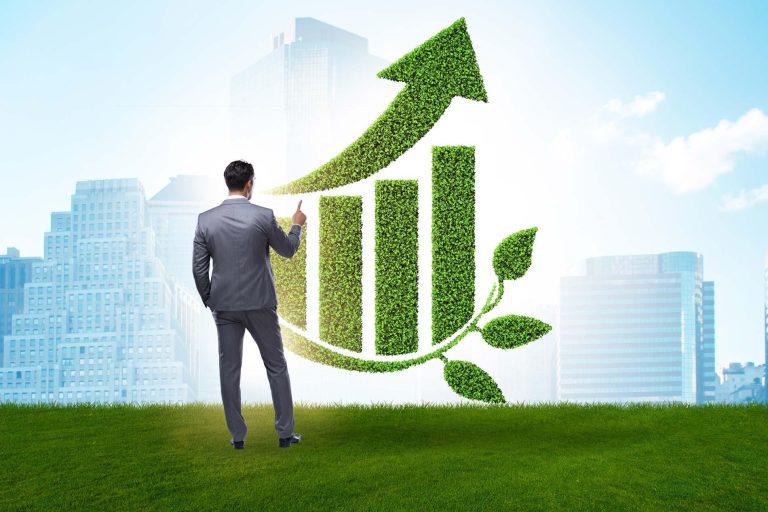Sustainable investing is moving from the margins to the mainstream as capital chases the rapid expansion of green industries. Asset managers report rising demand for strategies tied to clean energy, electric mobility, efficient buildings, and circular manufacturing, while companies accelerate spending on decarbonization and climate resilience.
The shift reflects tightening policy signals, improving economics for low‑carbon technologies, and mounting pressure on corporations to disclose and manage environmental risks. It also comes amid heightened scrutiny of “green” claims and evolving rules on what qualifies as sustainable-tensions that are reshaping products, data, and standards across the market.
With supply chains retooling and new infrastructure breaking ground, sustainable finance is increasingly intertwined with core growth themes. Whether the momentum holds will hinge on interest-rate paths, policy clarity, and investor confidence that greener business models can deliver competitive returns at scale.
Table of Contents
- Sustainable Investing Surges as Profitable Green Sectors Draw Fresh Capital
- Fund Flows and Earnings Signals Highlight Strength in Energy Efficiency Grid Modernization and Circular Materials
- Investors Should Prioritize Real Emissions Cuts Over Offsets and Demand Audited Climate Disclosures Capex Alignment and Board Accountability
- To Wrap It Up
Sustainable Investing Surges as Profitable Green Sectors Draw Fresh Capital
Capital is rotating toward cash-generative clean technologies as policy incentives, falling hardware costs, and corporate decarbonization mandates turn climate solutions into mainstream investment themes; deal flow is expanding from venture-heavy bets to bankable infrastructure, with public markets rewarding contracted revenues and resilient margins even amid higher rates, while investors intensify scrutiny of audited impact, Scope 3 disclosures, and credible transition plans to guard against greenwashing and valuation risk.
- Where money is flowing: utility-scale renewables and storage hybrids; the battery value chain (materials, refining, recycling); heat pumps and building efficiency; green hydrogen and e‑fuels pilots; EV charging and fleet electrification; nature-based projects with durable credits.
- Who’s deploying: infrastructure and energy transition funds; pensions and sovereigns; corporates via JVs and long-term PPAs; banks reviving project finance; insurers using private placements.
- Financing tools: green bonds and sustainability-linked loans; tax equity transfers; merchant exposure mitigated through hedges and offtake swaps.
- Risk checkpoints: permitting timelines; interconnection queues; supply-chain and critical minerals exposure; technology readiness levels; lifecycle emissions verification.
- What to watch: clarity on hydrogen and CCS incentives; grid modernization timelines; standardized carbon accounting; secondary markets for operational assets; a reopening window for listings as rate volatility eases.
Fund Flows and Earnings Signals Highlight Strength in Energy Efficiency Grid Modernization and Circular Materials
Investor allocations are rotating toward resource‑efficiency plays as fund inflows steadily accumulate alongside broad‑based earnings beats, with management teams flagging expanding order backlogs, disciplined margin execution, and clearer visibility from multi‑year capex plans. Analysts highlight resilient pricing power despite input volatility, stronger free‑cash‑flow conversion on software and services mix, and durable secular tailwinds from electrification, data centers, and industrial decarbonization-signaling a strengthening fundamental base across key subthemes.
- Energy efficiency: Building controls and industrial automation vendors report double‑digit software ARR, retrofit demand outpacing new construction, and services mix lifting gross margins.
- Grid modernization: T&D equipment and grid‑software providers note book‑to‑bill above 1.0, long‑duration awards tied to transmission upgrades, and AMI/DER orchestration driving recurring revenue growth.
- Circular materials: Recyclers and low‑carbon materials producers secure multi‑year offtakes, maintain premiums for certified content, and expand EBITDA spreads as packaging and auto commitments underpin volumes.
Investors Should Prioritize Real Emissions Cuts Over Offsets and Demand Audited Climate Disclosures Capex Alignment and Board Accountability
As capital flows into sustainability strategies, major asset owners are tightening criteria, signaling that portfolio companies must deliver verifiable, near-term emissions reductions, subject climate metrics to the same scrutiny as financials, align investment spending with credible transition pathways, and ensure boards are on the hook for execution.
- Cut emissions, not corners: Prioritize absolute and intensity reductions across Scope 1-3; restrict offsets to high-integrity, residual emissions only, with clear quality, permanence, and double-counting safeguards.
- Audit the climate ledger: Demand independent assurance of greenhouse-gas data and transition KPIs, aligned with ISSB/TCFD and emerging CSRD rules, with methodologies, boundaries, and restatements disclosed alongside financial filings.
- Capex aligned with 1.5°C: Publish a forward-looking capex map that channels spend to low-carbon growth, embeds carbon price and abatement economics in hurdle rates, and avoids new high-emitting projects misaligned with demand scenarios.
- Board accountability and pay: Require climate-competent directors, clear oversight at committee level, and compensation tied to audited decarbonization and transition milestones, with clawbacks for misstatements and greenwashing.
- Enforcement through capital: Escalate by voting against directors or financial statements lacking assurance, tightening lending and index inclusion, and linking bond and loan terms to assured climate targets with meaningful step-ups.
To Wrap It Up
As capital continues to move toward climate and sustainability strategies, the next phase will hinge on proof of impact and earnings resilience. Tighter disclosure regimes in the U.S. and Europe, along with emerging global standards, are expected to clarify definitions and weed out greenwashing, even as higher rates and volatile energy markets test project economics.
Corporate demand for low‑carbon inputs, driven by supply‑chain targets and policy incentives, is feeding a pipeline of projects across renewables, storage, efficiency and materials. Private and public markets alike are competing to finance that build‑out, with valuations and performance now under closer scrutiny.
Whether the surge endures will depend on policy stability, credible data and execution by companies. For investors, sustainable finance is shifting from narrative to numbers, with returns and measurable outcomes set to determine leadership in the next leg of growth.


